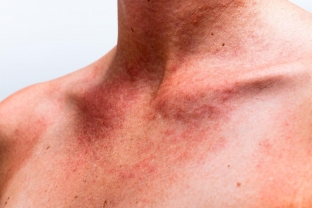Intense advertising of sunscreens has led to a real heliophobia: people are buying creams with a high SPF factor and are ready to use sunscreen cosmetics even in the absence of active radiation, but simply in fact the sun is shining brightly. Doctors are concerned that the abuse of sunscreen cosmetics leads to insufficient synthesis of vitamin D in the body, without which the skin ages no less intensively than from the sun. In addition, using protective products in the sun, people lose their caution in the received dose of ultraviolet radiation, which explains the dangerous skin diseases provoked by excessive insolation. How to prevent the harm of the sun and not miss its benefits, figured out estet-portal.com.
Sunlight or ultraviolet: what is the harm of the sun and its benefits
Sunlight and harmful ultraviolet rays that cause damage to the skin and premature aging – it's not the same thing. When assessing whether the sun will bring harm at one time or another of the day, depending on the season, region, part of the world, it is necessary to take into account not the brightness of the sun, but the ultraviolet index. This is an international standard that has been specifically developed to measure the intensity of human skin exposure to sunlight.
An index of 1-2 units is considered low (when ultraviolet radiation is practically absent) – for example, in winter St. Petersburg. At the same time, the sun is very bright there in winter. Average ultraviolet index – 3-5, high – from 6 to 7 (values 5 and 6 can be found on weather maps showing midday solar activity in July-August on the Mediterranean coast).
- When the index is less than 4 units, the skin does not need filters for sun protection.
- When the UV index is between 4 and 6, it is recommended to stay only under the awning from 11 am to 4 pm.
- At 7 and above – you need to go indoors or walk in closed clothes and a wide-brimmed hat.
- Values of 8-10 are considered very high, extreme – over 11.
UV indices are published by many weather and weather websites.
As a rule, in our region, the sun activity begins to exceed this safe value around the middle of March, therefore, with the onset of calendar spring, it is recommended to be careful in choosing cosmetic procedures and recommend patients to use cosmetics with a sun protection factor to prevent sun damage.
On the other hand, intensively protecting ourselves from the sun for fear of photoaging, we provoke another cause of unpleasant changes that occur with the skin – lack of vitamin D. As you know, this vitamin is produced by complex chemical reactions in our skin and only under the influence of ultraviolet rays of the sun.
If the skin does not receive the proper amount of UV rays, it does not produce vitamin D, which is actively involved in the synthesis of collagen and elastin. This means loss of skin tone and early appearance of wrinkles
Signs of vitamin D deficiency in the body, as a rule, are manifested by pallor and lethargy of the skin, its thinness and flabbiness. Therefore, by avoiding the sun in every possible way, we can provoke the very premature aging of the skin from which we are trying to hide.

The harm of the sun and protection from it: how to find a reasonable balance
One of the reasons for the surge of malignant skin neoplasms, experts call the improper use of sunscreen. The main mistake of people is to unconditionally trust that a cream with a high degree of protection will protect against all risks and will not allow you to get serious troubles up to melanoma. Not so long ago, before the general craze for sunscreens, with strong reddening of the skin and blisters on it, we immediately went into the shade. Now people just add a layer of cream and continue to fry in the sun, but after all, the cream will not save you from damaging the DNA of cells with ultraviolet rays.
There is evidence from studies that UVB rays help to strengthen the protection of cells from the risk of degeneration, and Type A rays can cause changes in cellular DNA. By overusing sunscreens, we are constantly filtering out the B rays, allowing only the A rays to affect the skin.
Damage to the cellular apparatus due to insolation has been statistically proven. Repetitive damage to the skin from the sun's rays – scientifically proven risk factor for melanoma. But to believe that this risk can be reduced to zero by sunscreen cosmetics – dangerous delusion
The risk of developing melanoma and other malignant skin tumors can be reduced by following the general rules: do not be in the sun during its greatest activity, protect the skin – including clothing made from natural fabrics.
As for the protection of the skin from premature aging, the protection scheme works well, in which a multi-layer makeup application scheme is used in urban conditions: when a day cream, makeup base, tone, mineral powder – all products have different low degrees of protection, but, applied in turn, protect the skin at a good level and at the same time allow you to maintain an attractive appearance.
See also: The effects of the sun on the skin: demystifying the sun and tanning







Add a comment